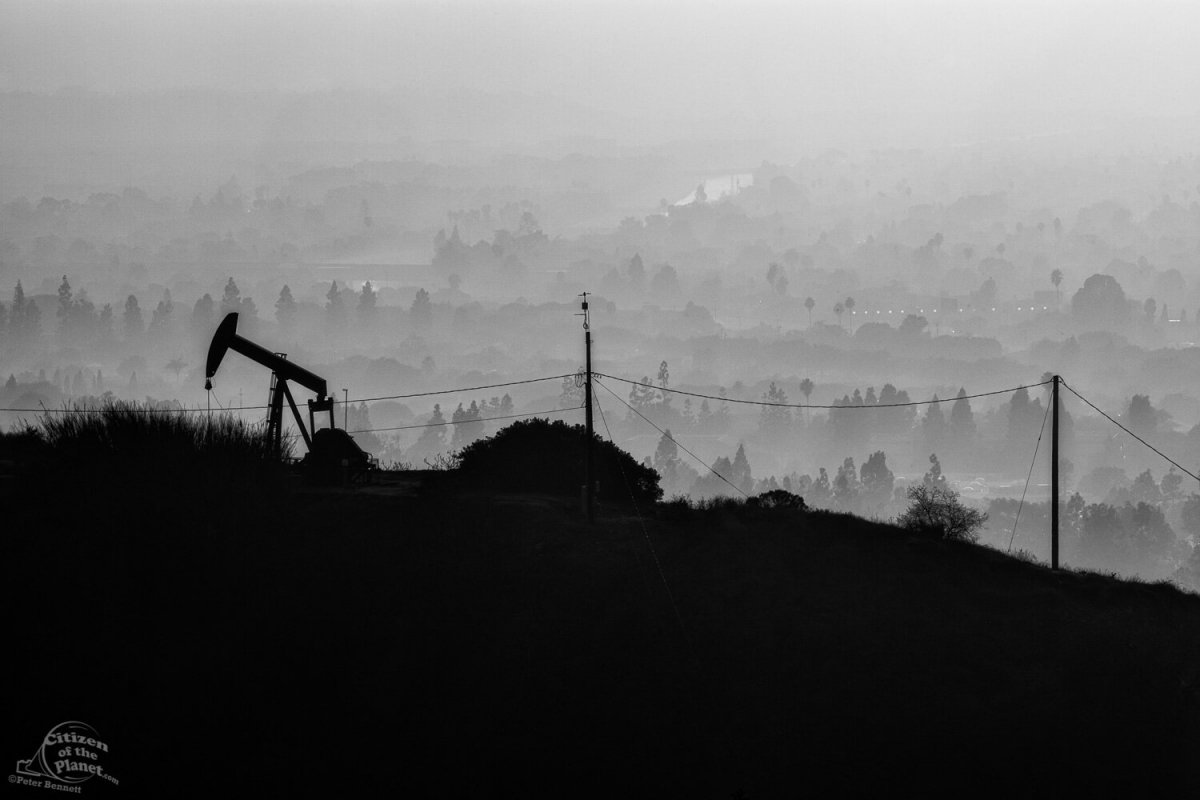Culver City is Phasing Out And Cleaning Up Oil Wells -- and That’s a Big Deal
Earlier this month, Culver City voted to phase out and clean up oil wells within the city’s borders by July 28, 2026. This vote is historic on multiple levels -- for starters, Culver City is one of the first cities in recent history to phase out existing oil production. The process, which included a study to inform the timeline to phase-out oil drilling, creates a pathway for the city and county of Los Angeles to follow.
But the Culver City vote is also a big deal because it addresses a much larger, much more expensive issue that often goes under the radar. The Culver City City Council voted not just to phase out existing oil drilling but also to clean up and remediate the oil wells.

Inglewood Oil Field, Culver City by Peter Bennett
A Statewide Problem with Expensive Consequences
Oil well remediation is a big issue in California. While the oil industry is legally required to clean up their oil wells, there is an insufficient timeline and enforcement of the process. Often an oil company will leave the well unplugged instead of cleaning it up, or they will continue to collect a miniscule amount of oil so that it’s still technically active. About 65 percent of oil wells in California are underperforming or idle (have not produced oil in two years.)
And it’s an expensive problem. It’s estimated that it will cost 6 billion dollars to clean up California's approximately 70,000 underperforming and idle wells. This cost should not fall on taxpayers, and yet, the oil industry is getting more and more creative to get out of the cost of cleaning up their mess.
The largest oil producer in the state, California Resource Corporation, declared bankruptcy and the cost of cleanup for 18,000 wells could fall to taxpayers. The clean up cost is estimated to be over $50,000 per well for a total of over $900 million.
Nationally, 260 oil and gas production companies have filed for bankruptcy since 2015. CalGEM, the state’s oil and gas regulator, estimates that 800 oil companies have dissolved over the years without cleaning up their wells or paying state fees. Without proper regulation and enforcement by the state and local governments, tax payers could be left on the hook for billions of dollars of clean up costs from unplugged oil wells all across California.
Inactive Oil Wells are A Public Health and Climate Emergency
But just because a company stops drilling for oil does not mean that communities are safe from the effects of oil production. Unplugged oil wells can release methane (a greenhouse gas 86 times more potent than CO2), contaminate groundwater, and allow for flammable gases to build up and leak to the surface causing risk of explosions.

Residential houses next to oil refinery at Wilmington by Peter Bennett
Increased exposure to air toxins increases the risk of health harms, which is especially serious in Los Angeles since the majority of oil wells in the LA area are within 2,500 feet of homes, schools, hospitals, parks, and other sensitive sites.
In Los Angeles, residents still complain of toxic fumes from AllenCo, an oil production site that was closed but not cleaned up. There are approximately 1,300 idle wells in LA County. More than 350,000 Californian residents live within 600 feet of an unplugged well.
Cleaning Up Wells Can Create High Quality Jobs
Requiring oil companies to clean up their messes wouldn’t just protect taxpayers and public health - it would also create good jobs. As part of the Culver City ordinance, city staff were directed to develop “just transition strategies” to support impacted workers and community residents. Advocates recommended that any displaced workers be transitioned to high-road jobs with the necessary training and wage compensation. If done right, oil remediation can be a great transition for displaced oil workers, creating an estimated 9,000 new jobs over the course of 10 years across the state of California to address already underperforming and idle wells.
Culver City is a Leader and It’s Time for the Rest of Los Angeles to Follow
Culver City’s historic vote will shut down and clean up 41 active oil wells -- about ten percent of the Inglewood Oil Field, the largest urban oil field in the country. This victory was possible thanks to years of advocacy from Sierra Club members and partners calling on the city council to protect people and hold polluters accountable. Los Angeles County is responsible for the remaining 90 percent of wells of the Inglewood Oil Field, located in Baldwin Hills, Ladera Heights, View Park-Windsor Hills, Baldwin Vista, and other neighboring communities. Other local municipalities, including Los Angeles county and city, and the state of California, must follow the lead of Culver City to not just phase out all existing oil production, but to clean it up as well.
Blog Category:



Add new comment